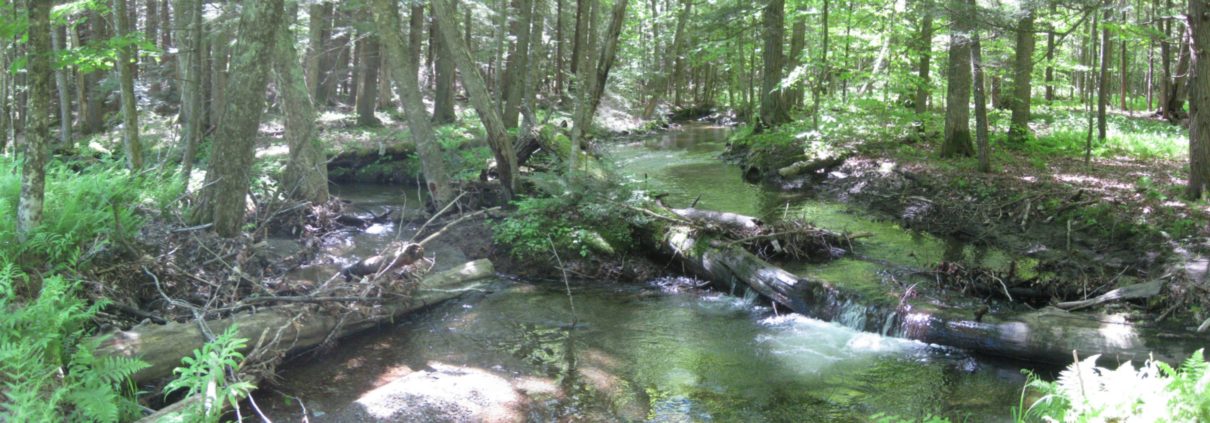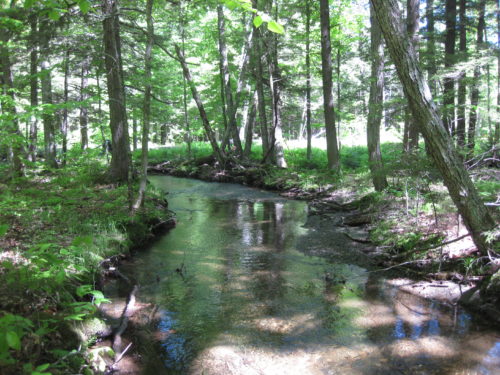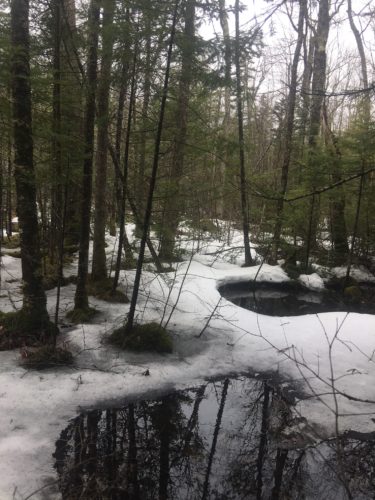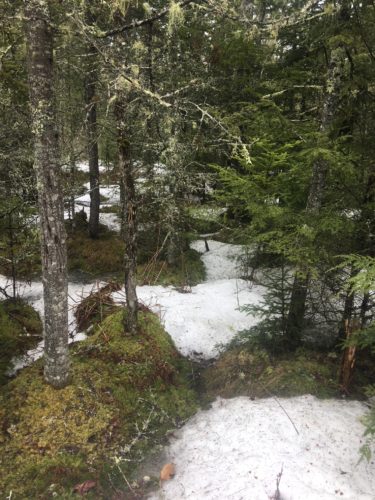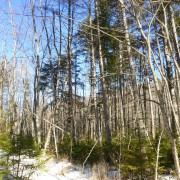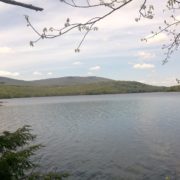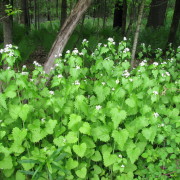Tunis District Conservation Area Complete
If you’ve ever enjoyed a sunset across Goose Pond or a boat ride on its waters, then chances are you’ve taken in the beauty of the unfragmented hillside that lies between the pond and Moose Mountain. Similarly, if you’ve hiked to the south peak on Moose Mountain, you’ve enjoyed the views in the opposite direction over a vast and wild forested area, abundant with streams and wetlands, where moose and bear are free to roam. This land and these views are the Tunis District Conservation Area.
Over the summer, UVLT completed the first step in creating a 553 acre conservation area in East Hanover with the protection of the first 201 acres. On December 23rd, the second half of the Tunis District Conservation Area was protected, adding 352 acres of conserved land and completing the project.
The Tunis District Conservation Area land has been owned by Keith Quinton and Barbara Fildes for ten years. They purchased the large chunk of land in the midst of a destructive timber harvest to protect it’s views and natural resources from subdivision and development. Now they have insured its permanent protection by selling the property to UVLT at a deeply discounted price. With the help of our many generous donors UVLT was able to raise the funds to purchase the property and protect it forever.
The Tunis lands are rich in natural resources, including more than 5 acres of amphibian-abundant wetlands, 2.3 miles of perennial streams including Scales Brook – a headwater stream to the Mascoma River, and habitat used by bear and moose. It lies adjacent to the Appalachian Trail Corridor (AT) and hikers on the trail enjoy views of the property from the South Peak of Moose Mountain. It also lies within a 12,000 acre unfragmented forest block that extends into Lyme and Canaan, making it ideal for wide-ranging animals which require thousands of acres to roam. UVLT sought long-term ownership of this land because of its significance to landscape resiliency and connectivity.
The Town of Hanover Open Space Plan, written in 1999, notes: “If the area is protected soon, it will be a permanent refuge for use by residents to revive spirit and soul, and to remember an important reason why so many choose to live here. Just as importantly, it will be a permanent, outstanding wildlife habitat, enhancing the biodiversity and quality of life for a large variety of indigenous species.”
Several partners contributed funding to support this project, including the A.T. Partnership Action Fund, the Town of Hanover, the New Hampshire Aquatic Resrouce Mitigation Fund, and the Quabbin to Cardigan Partnership.

